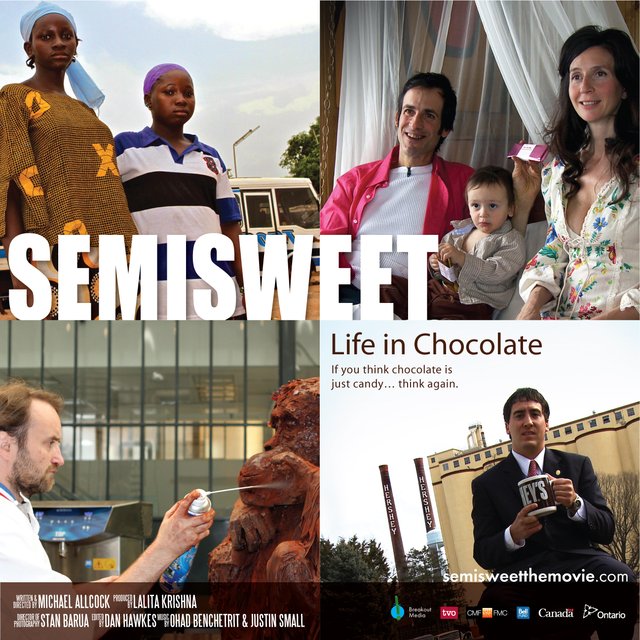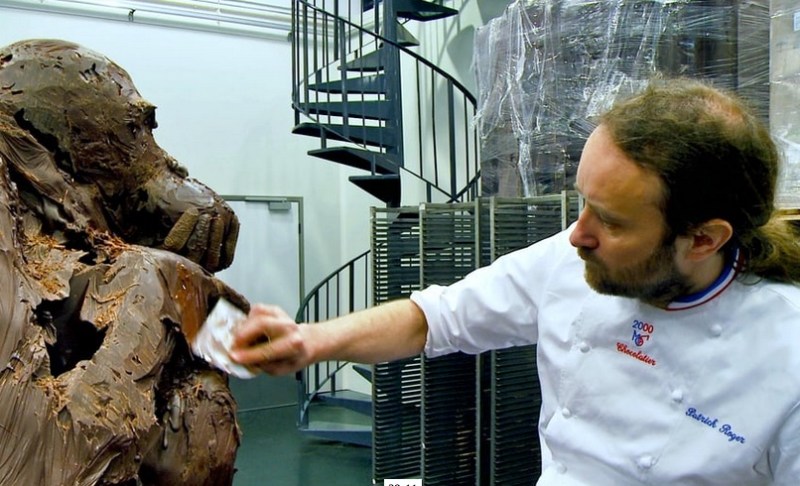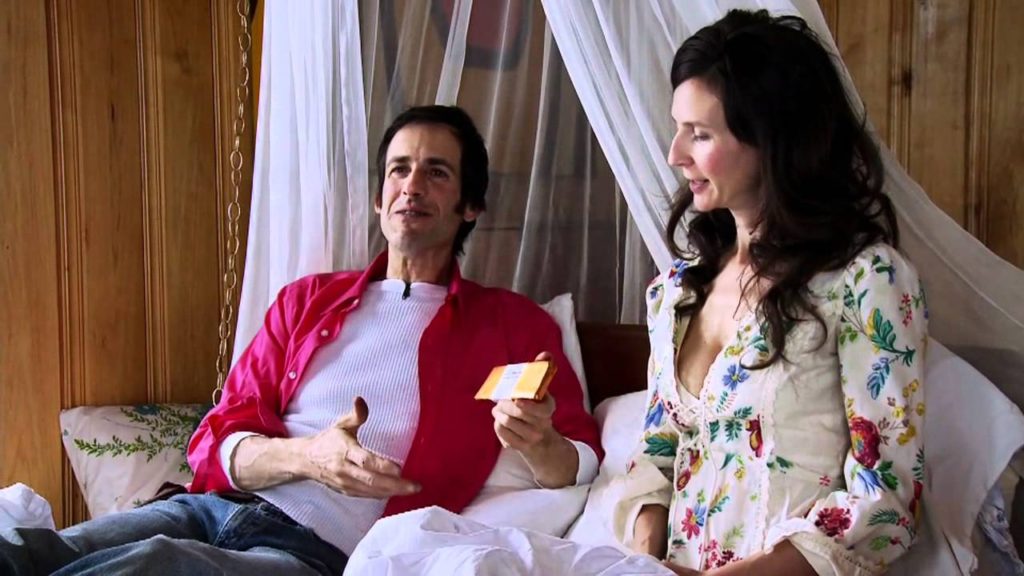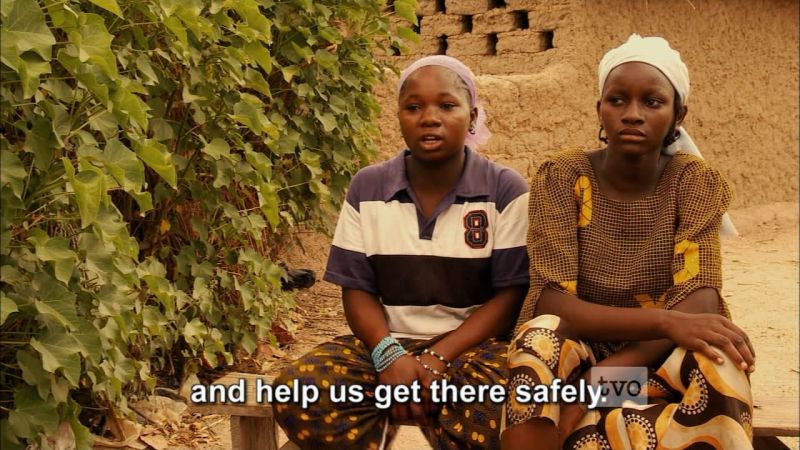Film Review
Semisweet: Life in Chocolate
Originally published on a former RecipeNet site in December, 2012

🎄 I wrote this review on one of my older sites eight years ago when Semisweet: Life in Chocolate first came out. I am reposting it here on my new blog because it’s such a good documentary. I will be watching it again over the Christmas season and I highly recommend it to everyone – especially if you like chocolate. 🎄
Christmas is a time of year for peace and goodwill toward others. It is also one of the biggest chocolate eating holidays. The documentary “Semisweet: Life in Chocolate” provides food for thought as it explores the various worlds of chocolate. This is an excellent documentary to watch and discuss before we go out and buy all those wonderful treats for friends and family, so that we may be conscious of the impact we make through our purchases.
“Semisweet” first takes us to Paris, France and the world of Patrick, who was voted top French Chocolatier in the year 2000. Patrick’s world is all about making the finest chocolate. Each piece must be perfect. His cacao beans are imported from South America, Indonesia and Madagascar, most of it being fair trade and organic. An artist, Patrick also sculpts using chocolate as a medium.

The documentary’s second stop is Haliburton, Ontario where we meet Ron and Nadine who make 100% raw cacao bars with added health enhancing ingredients such as adaptogenic herbs. The hand crafted bars sport names like “Vanilla Vibhutti”, “Purple Chocolate Jesus” and “Bliss Like This”. Ron and Nadine’s world is all about maximizing the health benefits of chocolate. They post videos on youtube to discuss their raw cacao enterprise. As one would expect, their chocolate is also fair trade and organic.

Next we’re shown a more sombre world of chocolate – the plantations in West Africa’s Côte D’Ivoire which produces almost half the world’s cacao. Workers come from neighbouring Mali and Burkina Faso, many of them children, some as young as six years old. Children are lured away from their families by recruiters who promise substantial pay. Unfortunately, they face dangers traveling to Côte D’Ivoire, they work long hours in harsh, abusive conditions and in the end they are paid very little – not the money they were promised. Some become exposed to pesticides that have been banned almost everywhere else in the world.

In stark contrast to Côte D’Ivoire, we are then taken to the town of Hershey, Pennsylvania, home of the largest chocolate factory in North America. Hershey, “the sweetest place on earth,” is one of America’s top tourist attractions, offering a roller coaster, golf courses, restaurants and much more. Employees interviewed seem to love working there, referring to Hershey as a happy place that always smells like chocolate.


“Semisweet” takes us on a journey that continually cycles through these disparate worlds, uncovering different “layers” of chocolate. The ending (which I won’t reveal) is a poignant demonstration of just how far apart the world of the plantations and the world of consumers can be. 🍏
Semisweet came out eight years ago in 2012. Interestingly, the Hershey company had actually made a commitment to sourcing 100% sustainable cacao just prior to the release of this film. They have also been working toward improving the child labour situation in west Africa. A few snippets of their statement is below:
“More than eight years ago, Hershey made an ambitious, important commitment to reaching 100 percent certified and sustainable cocoa by 2020. As we shared in a recent blog, we fully met that commitment by the start of 2020 – and are excited to keep our sustainability momentum going over the decade ahead.”
“We source exclusively from cocoa suppliers certified by organizations such as Fairtrade USA, and Rainforest Alliance. It ensures we’re only working with farmer groups empowered with the resources, administrative systems, and local infrastructures necessary to meet the high standards of certification.”
“We are scaling our Child Labor Monitoring and Remediation Systems (CLMRS), the leading way to detect, remediate and eliminate child labor, across our entire West African cocoa sourcing supply chain by 2025. This includes engaging trusted members of farmers’ own communities in auditing farmers’ work practices and following up with them to find ways to help them lessen their reliance on the work of children (and keep children in school).”
Last year the United States Department of Labor had this to say about child labour in Côte D’Ivoire:
“In 2019, Côte d’Ivoire made a moderate advancement in efforts to eliminate the worst forms of child labor. The government initiated 143 prosecutions related to the worst forms of child labor, and the Ministry of Justice issued a circular instructing law enforcement officials and the judiciary to fine, arrest, or prosecute perpetrators of child labor. In addition, the government officially adopted the National Action Plan for the Fight Against Trafficking, Exploitation, and Child Labor, which was developed in 2018. However, children in Côte d’Ivoire engage in the worst forms of child labor, including in the harvesting of cocoa and coffee, sometimes as a result of human trafficking. A lack of financial resources and personnel may have hindered labor law enforcement efforts. In addition, labor inspectors are not authorized to assess penalties.“
Below is a short trailer for Semisweet: Life in Chocolate. You can view the full documentary on Youtube. For info on finding fair trade chocolate you can visit Fairtrade.ca. Other resources include: The Good Trade and Canadian Living’s Guide to Fair Trade Chocolate. To learn more about fair trade in general, you can visit Fairtrade International. 🍏
No Comments